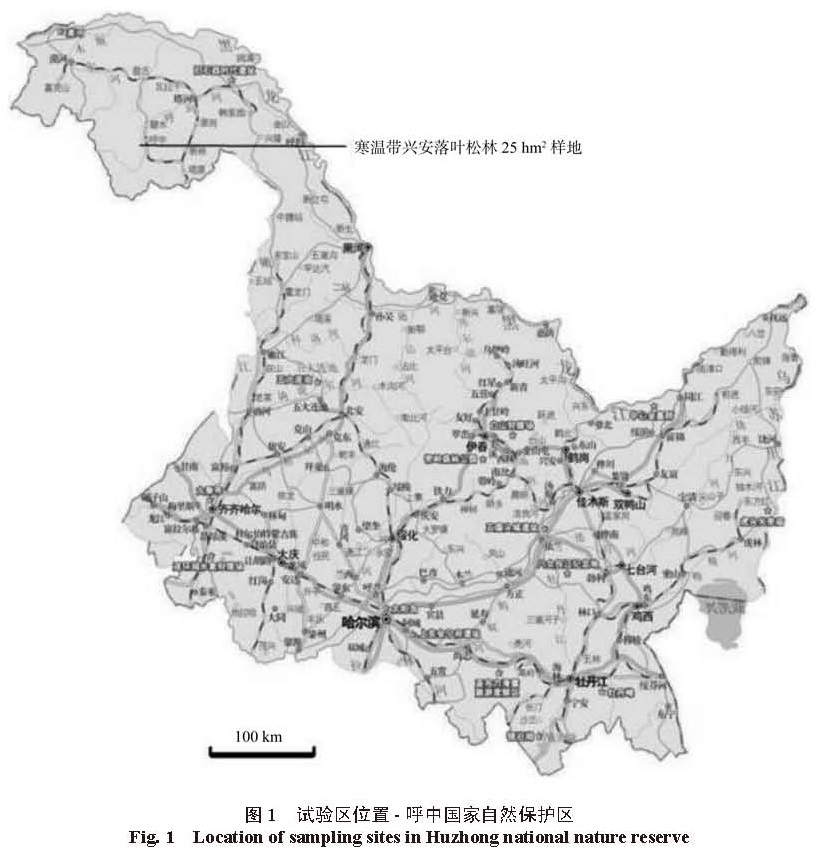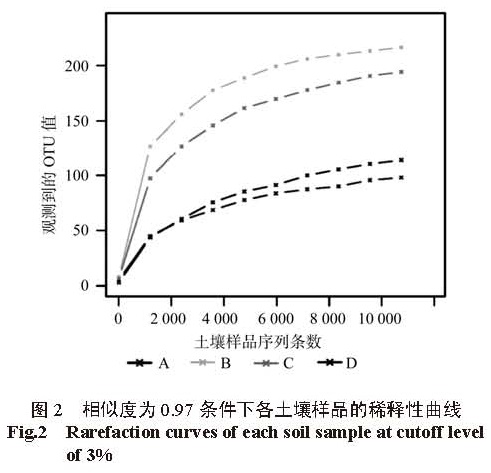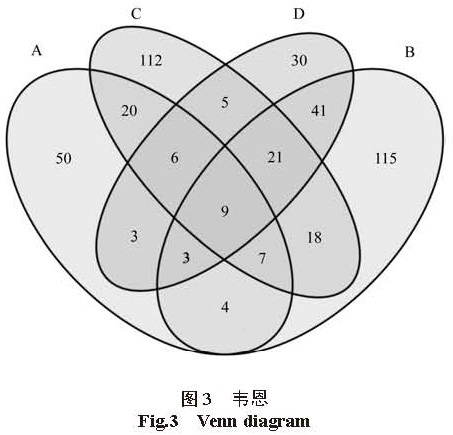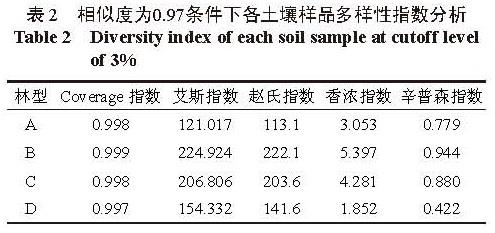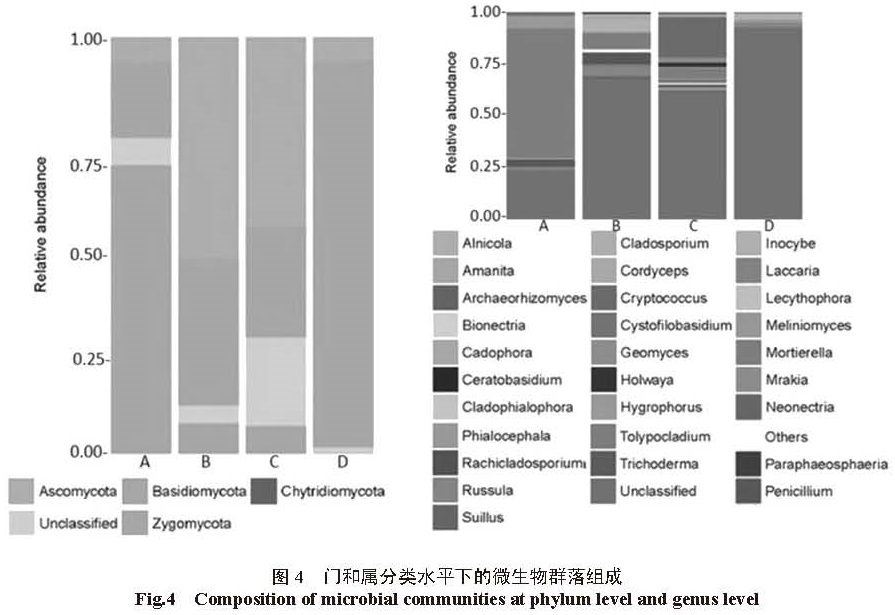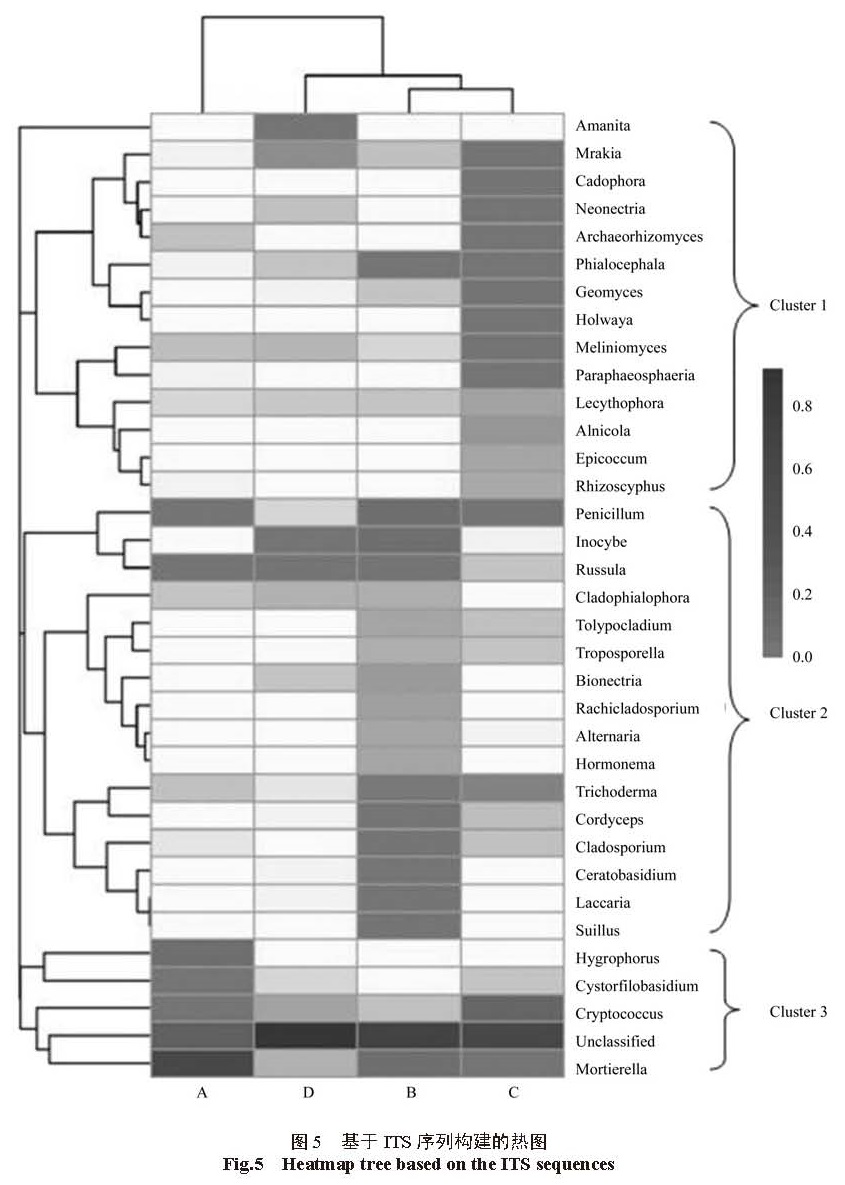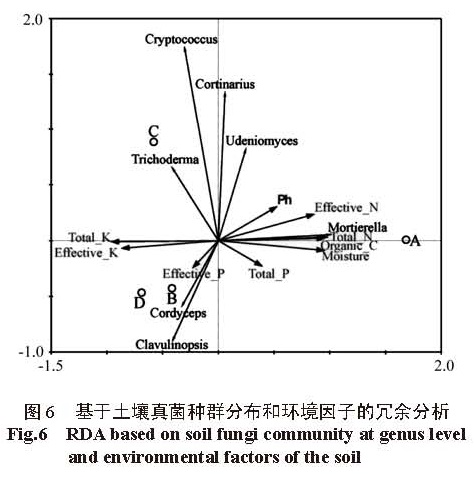作者简介:杨立宾,副研究员,博士 通讯作者:倪红伟,研究员,博士生导师;E-mail:nihongwei2000@163.com
为了研究不同林型兴安落叶松林土壤真菌群落结构特征,探讨土壤真菌群落结构变化的影响因子,进一步弄清楚土壤真菌群落结构与不同兴安落叶松林之间的关系和作用。本研究分别以藓类兴安落叶松林、杜香兴安落叶松林、草类兴安落叶松林和杜鹃兴安落叶松林的土壤真菌为研究对象,采用高通量测序方法对土壤进行测序,分析了土壤真菌的Alpha 多样性、物种组成和丰度,并研究土壤理化性质对真菌群落结构的影响。结果 表明,大兴安岭兴安落叶松林共检测到4 门11 纲36 目63 科74 属土壤真菌。优势菌门为子囊菌门Ascomycota、担子菌门Basidiomycota、接合菌门Zygomycota、壶菌门Chytridiomycota,主要的优势菌属为隐球菌属Cryptococcus、小轮孢霉属Troposporella、丝膜菌属Cortinarius、拟锁瑚菌属Clavulinopsis(5.63%)、被孢霉属Mortierella、虫草属Cordyceps。Mortierella、Udeniomyces、Cortinarius、Cryptococcus、Trichoderma、Cordyceps、Clavulinopsis 等菌属受土壤环境因子和土壤理化性质影响显著。通过冗余分析发现,土壤含水率、pH 值、土壤氮、土壤磷、有机碳等是不同土壤环境中土壤真菌群落结构变化的重要影响因子。本研究表明寒温带兴安落叶松林中不同土壤环境的土壤真菌群落存在差异,土壤真菌群落与土壤环境因子之间具有相关性。
This study aims to study the structural characteristics of soil fungi in different forest types of Larix gmelinii forest and understand the relationship between the community structures and diversity of soil fungus and environmental factors, which uses highthroughput sequencing to examine the genetic diversity of soil fungus. In this study, the soil fungal Alpha diversity, species composition and abundance of four Larix gmelinii forest types (Mosses-Larix gmelinii forest, Ledum- Larix gmelinii forest, grass-larch forest and rhododendron-Larix gmelinii forest) were investigated by using the high-throughput sequencing, and analyzed the effects of soil physical and chemical properties on fungal community structure. The results showed that a total of 4 phyla, 11 classes, 36 orders, 63 families and 74 genera fungi were detected in the monitoring sample plot of Larix gmelinii forest.the dominant fungus were Ascomycota, Basidiomycota, Zygomycota and Chytridiomycota. Each type of edatope had its particular or mutual fungal genera with different abundance, some of which, like Mortierella, Udeniomyces, Cortinarius, Cryptococcus, Trichoderma, Cordyceps and Clavulinopsis, were affected greatly by soil physicochemical properties. According to RDA analysis, we found that major influence factors that caused the change of soil fungal community structures in different soil environments were soil moisture content, pH, soil-nitrogen,soil phosphorus and organic carbon. These results revealed differences in soil fungal community among different soil environments of Larix gmelinii forest in cold temperate zoneand that the soil fungal community was correlated with the soil environmental factors.
